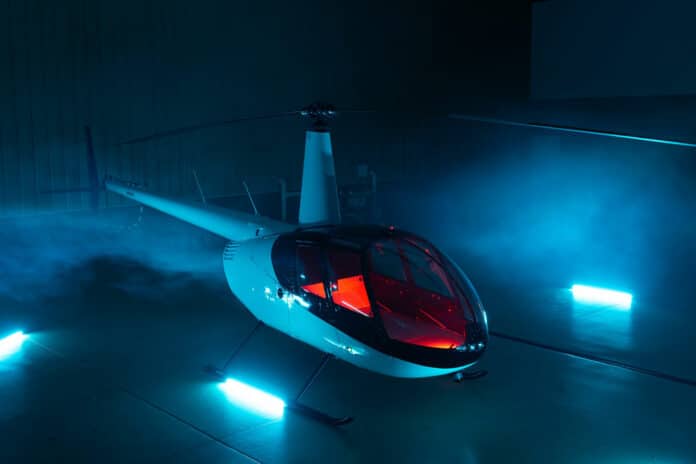US startup Rotor Technologies has unveiled the R550X autonomous helicopter for civilian use that it intends to bring to market in 2024.
Based on the existing Robinson R44 Raven II, the R550X is the world’s largest uncrewed civilian helicopter. It is designed for safety-critical cargo, utility, and maritime operations that require a higher payload capacity and range than drones or eVTOLs can provide.
The helicopter is designed to lift heavy loads up to 1,200 pounds (550 kilograms), which is more than twice the effective payload of the Robinson R44. With a flight time of more than three hours and a top speed of 150 mph (241 km/h), the R550X offers long-range VTOL capabilities beyond the reach of drones and eVTOLs. The helicopter has a flight range of 350 nautical miles (650 km) with a cruise speed of 109 knots (201 km/h).
“The R550X is going to bring huge safety and economic benefits to a wide range of helicopter use cases,” says Rotor CEO Hector Xu, “Demonstrating the impact of autonomy in dangerous missions like crop dusting and aerial firefighting is the first step towards our vision for safe and accessible vertical flight.”
The R550X is powered by a Lycoming IO-540 six-cylinder piston engine that runs on 100LL low-lead aviation gasoline, but the company is also exploring other fuel options such as jet-A or sustainable aviation fuel (SAF). Rotor Technologies plans to produce another autonomous helicopter model based on the Robinson R66, which will feature a Rolls-Royce RR300 turbine engine.
The R550X uses a suite of sensors and digital fly-by-wire controls to operate safely and autonomously in a wide range of operating environments – including at night and in limited visibility. The aircraft’s software can prevent common causes of helicopter accidents, such as inadvertent entry into instrument meteorological conditions (I-IMC), vortex ring state, mast bumping, loss-of-control, and controlled flight into terrain (CFIT).
Communications between the aircraft and ground controllers utilize a combination of direct radio, LTE/cellular networks, and satellite links.
The R550X is not meant to carry people and falls under the experimental category of uncrewed aircraft. Operators can follow the existing FAA rules and regulations to fly the R550X in agricultural, firefighting, inspection, and maritime operations.
According to the company, they have already received Letters of Intent (LOIs) from some agricultural customers who want to use the R550X for crop spraying. Currently, Rotor Technologies is producing the first two helicopters at their facilities in New Hampshire.
The company is still seeking a supplemental type certificate (STC) from the FAA for the R550X, but it is already making the aircraft available in early 2024 as an experimental-category aircraft in the meantime. Customers who receive these early deliveries will have to obtain a special airworthiness certificate from the FAA to start operations.
Rotor says it is also pursuing certification for future autonomous helicopters that can transport passengers for commercial air taxi services.
